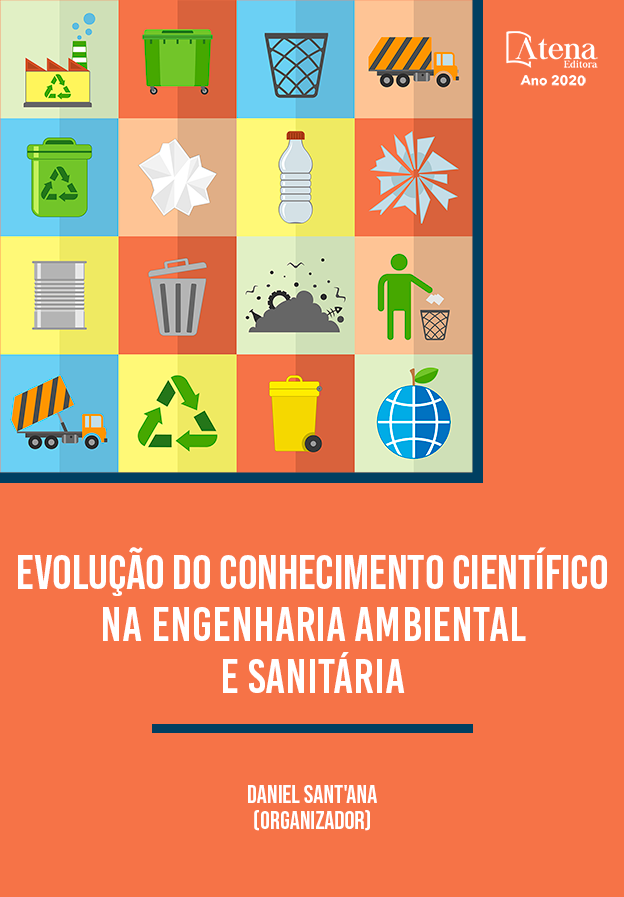
COEFICIENTE DE DECOMPOSIÇÃO DA SERAPILHEIRA EM ÁREAS DE EUCALYPTUS UROPHYLLA E EUCALYPTUS CITRIODORA
Transformações nas paisagens naturais do planeta causam impactos negativos ao ambiente. Dentre ascausas de perturbações ambientais, inclui-se a atividade da monocultura, que age como um fator de redução da biodiversidade. Neste contexto, análises relacionadas aos processos responsáveis sobre o funcionamento dos ecossistemas, surgem como grande alternativa para avaliar os níveis de perturbações nos ambientes. Assim, o objetivo do estudo foi compreender a influência do cultivo de Eucalyptus spp., sobre a qualidade do ambiente em que está inserido. Para isso, foi selecionada uma área povoadapor Eucalyptus urophylla e outra composta por Eucalyptus citriodora. Nestas áreas foram realizadas mensuraçõessobre a perda de massa da serapilheira foliar, para o cálculo do coeficiente de decomposição (k). As amostras de serapilheira da área de E. urophylla apresentaramcoeficiente de decomposição médio igual à k = 0,48,enquanto a área de E. citriodora apontou valor médio igual à k = 0,53. Os valores de k apresentados pela serapilheira dos eucaliptais não apontaram diferença estatísticas entre as espécies (Teste t- de Student, p < 0,05). A serapilheira das amostras de E. urophylla e E. citriodora apresentaram baixo valor para o coeficiente de decomposição, corroborando um padrão visto em espécies de eucaliptais, que está fortemente ligada à composição química do material foliar destas espécies, o que dificulta a ação dos agentes decompositores.
COEFICIENTE DE DECOMPOSIÇÃO DA SERAPILHEIRA EM ÁREAS DE EUCALYPTUS UROPHYLLA E EUCALYPTUS CITRIODORA
-
DOI: 10.22533/at.ed.77120261017
-
Palavras-chave: Processos Ecossistêmicos; Decomposição da Serapilheira; Coeficiente de decomposição (k); Funções da Serapilheira.
-
Keywords: Ecosystem Processes; Litter decomposition; Decomposition coefficient (k); Litter functions.
-
Abstract:
Transformations on the planet`s natural landscapes have negative impacts on the environment. Among the causes of environmental disturbances, the activity of monoculture is included, which acts as a factor in reducing biodiversity. In this context, analyzes related to the processes responsible for the functioning of ecosystems, appear as a great alternative to assess the levels of disturbances in the environments. Thus, the objective of the study was to understand the influence of Eucalyptus spp. Cultivation on the quality of the environment in which it is inserted. For this, an area populated by Eucalyptus urophylla and another composed by Eucalyptus citriodora were selected. In these areas, measurements were made on the leaf litter mass loss, to calculate the decomposition coefficient (k). The litter samples from the area of E. urophylla presented an average decomposition coefficient equal to k = 0.48, while the area of E. citriodora showed an average value equal to k = 0.53. The k values presented by the eucalyptus litter did not show any statistical difference between the species (Student's t-test, p <0.05). The litter of the samples of E. urophylla and E. citriodora showed low value for the decomposition coefficient, corroborating a pattern seen in eucalyptus species, which is strongly linked to the chemical composition of the leaf material of these species, which makes it difficult for the agents to action decomposers.
-
Número de páginas: 13
- André Batista de Negreiros
- Winkler José Pinto


